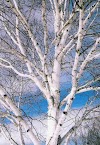Shamlaji is a large village and an ancient pilgrimage site in Bhiloda taluka, one of the total 6 (six) talukas in Aravalli district in the north-eastern part of Gujarat state in the western part of India. From here National Highway no. 3 passes. Apart from this, Shamlaji is also connected to the surrounding important places by state highway.
The main occupations of the people of Shamlaji village are farming, farm labor, animal husbandry and trade. In this village mainly wheat, cumin, millet, cotton, potato, diwali as well as vegetable crops are cultivated. The village has primary school, panchayat house, anganwadi, ITI, B.Ed. Facilities like college as well as dairy are available.
Shyamal Forest is located near Shamlaji, which has a variety of trees. There is a well near Shamlaji temple. Which is called Vav. The work of Shyamal One was done by Narendra Modi. Shyamal Forest is built in Bai Lake in ancient Shamlaji. In Shamlaji there is a famous wanghu as Nagdhara. Where people come to bathe on the day of Black Fourteen.
Places of worship
Shamlaji Temple
Shamlaji is located on the banks of the Meshwo River. Shamlaji is primarily a place of worship for Vaishnava merchants and is famous in the Puranas as the Gadadhar region. The main temple of Shamlaji is named after Lord Krishna (Shamlasha Seth). This temple is a specimen of Hindu architecture. This temple is believed to have been built in the 10th or 11th century. The ancient Chaulukya style is found in the construction of the temple. The original temple lasted five hundred to eight hundred years and then the identity of the fifteenth-sixteenth century is found in today's temple. Of course, the statue of Thakorji dates back to the seventh and eighth centuries. Facing north. Part of his world is vast.
The sanctum sanctorum is located in front of the entrance with the arch of the temple and the idol is built in front of it. Which is about 150 cm. As high as. This quadrilateral is located in front of the Vishnu statue. The temple is mainly divided into three parts. 1. Meeting room, 2. Interval and 2. The womb. The walls of the temple are carved with statues of gods and goddesses, human-animals and flowers. In these sculptures, idols of Indra, Ajni, Varuna, Shiva, Ganesha, Saraswati, Indrani etc. are found on the occasions of Mahabharata and Ramayana. The peak of the temple gets smaller as it goes upwards. The peak has three peaks with flags at the fire. Two inscriptions on copper foil found in the temple indicate that the temple was renovated in the 19th century. In which the renovation done by Thakore of Tintoi in 19th is mentioned. In both these inscriptions the name of the temple god is written as Gadadhar which is a mixed name of Vishnu, Krishna and Shamlaji.
Kshatrapakal stupas and viharas have been found at a place called Devni Mori at a distance of 3 km from Shamlaji. These relics indicate that this place is an important center of the Buddhist era.
Fair of Shamlaji
For more information see Main article: Shamlaji Fair
The huge fair known as Shamlaji fair is held on the day of Kartak Sud-15. The fair starts from Devuthi Agiyaras. The fair lasts for three weeks. A large number of tribals come to this fair. Bathing in the Meshwo River is also of special importance during the fair. There is a very popular folk song about the fair: 'Shamlaji's fair will play Ray Ranjaniyu!





![kamal [Lotus] ka phul all history](https://blogger.googleusercontent.com/img/b/R29vZ2xl/AVvXsEiozKaLrtdgRPhNgswIIMiiNDNByf9KpWiBCca_FVEsFJYNRK1FXYuvOmWZUkN8u9mX4VSiBcieBjGF2eSDz61Tk41sdpMwnW9muW8Tsf2EMADaR_ipENGlOUh56fRyWdsujy976mIgYIqs/w100/download.jpg)









0 Comments